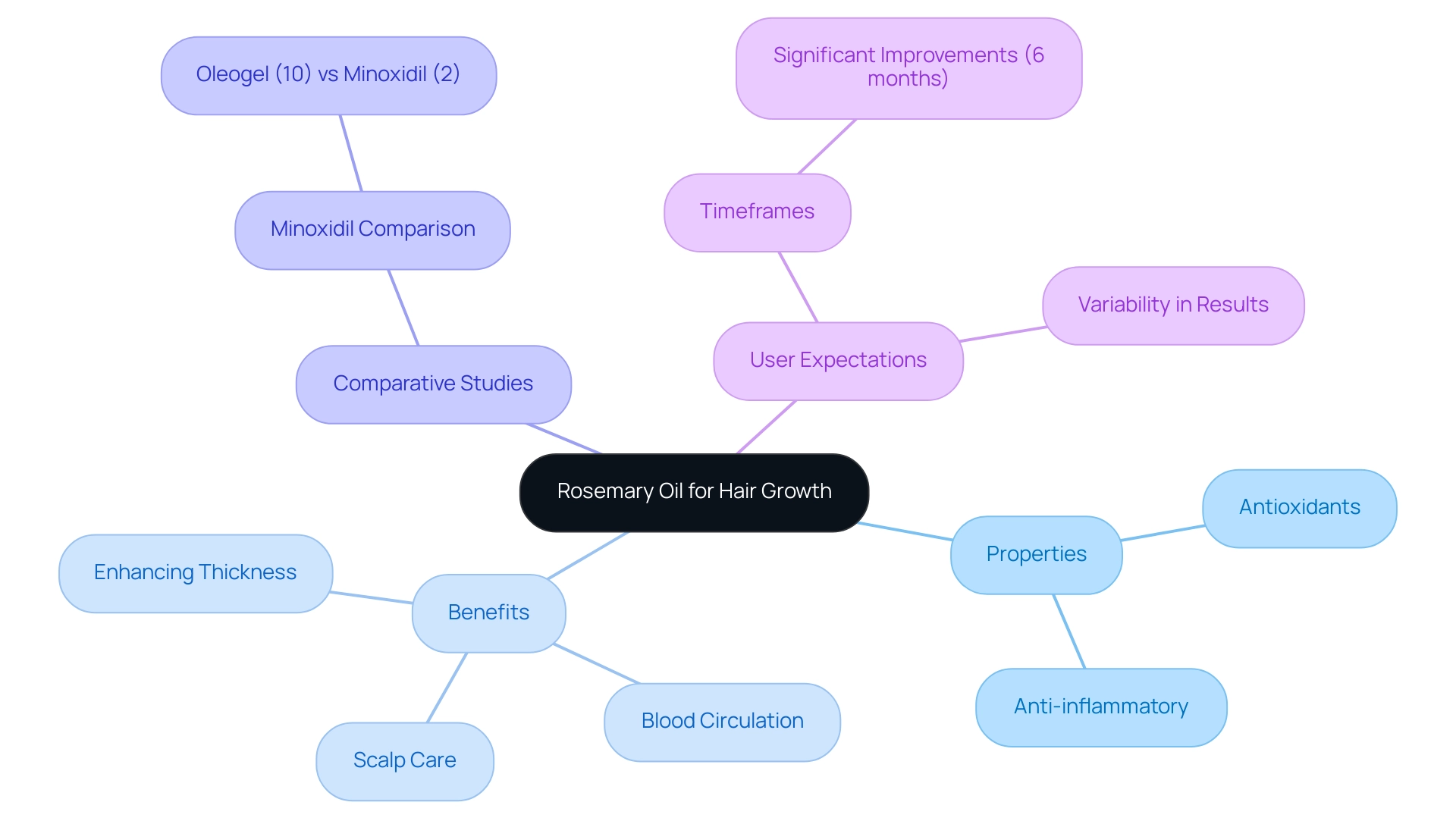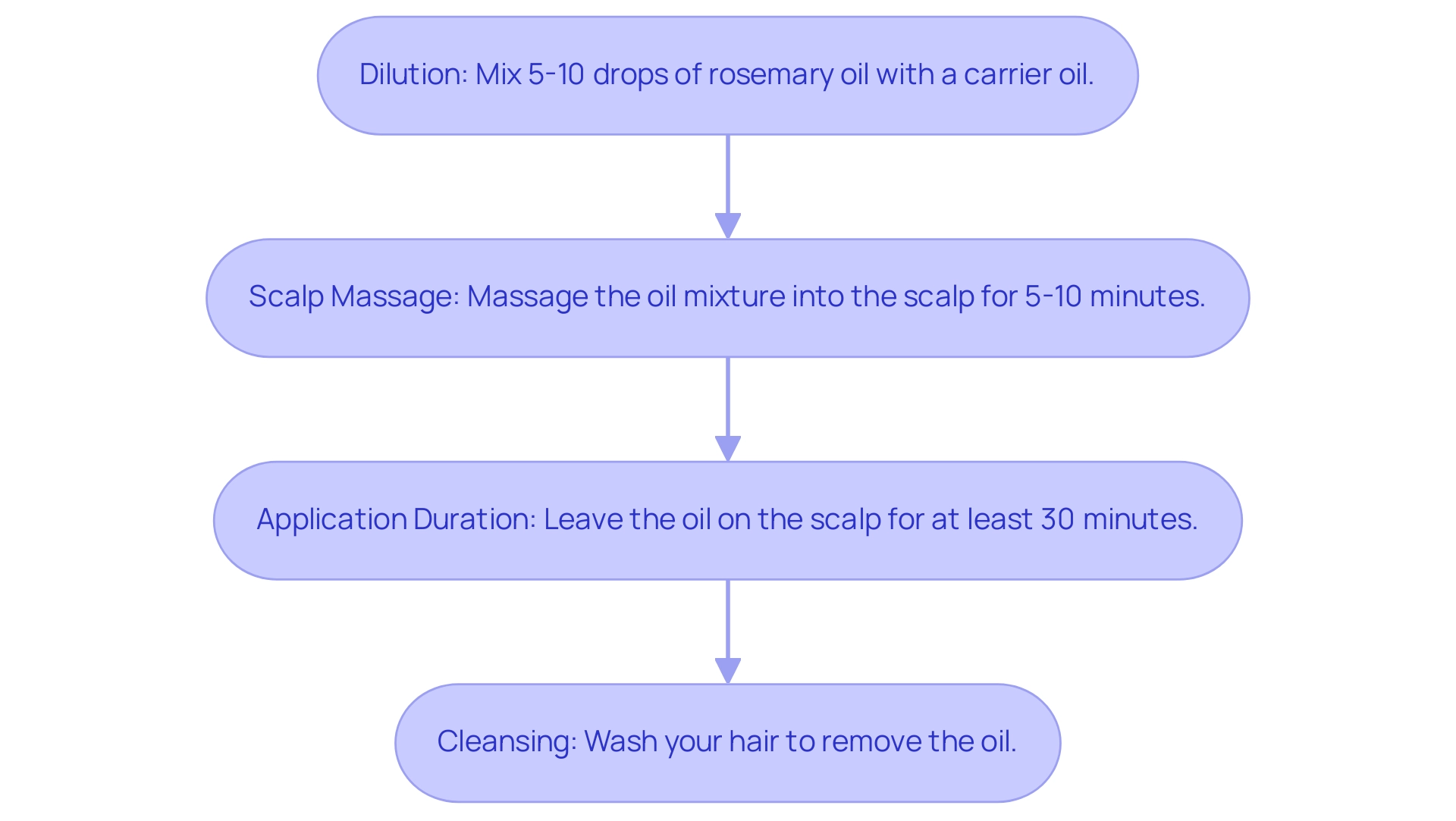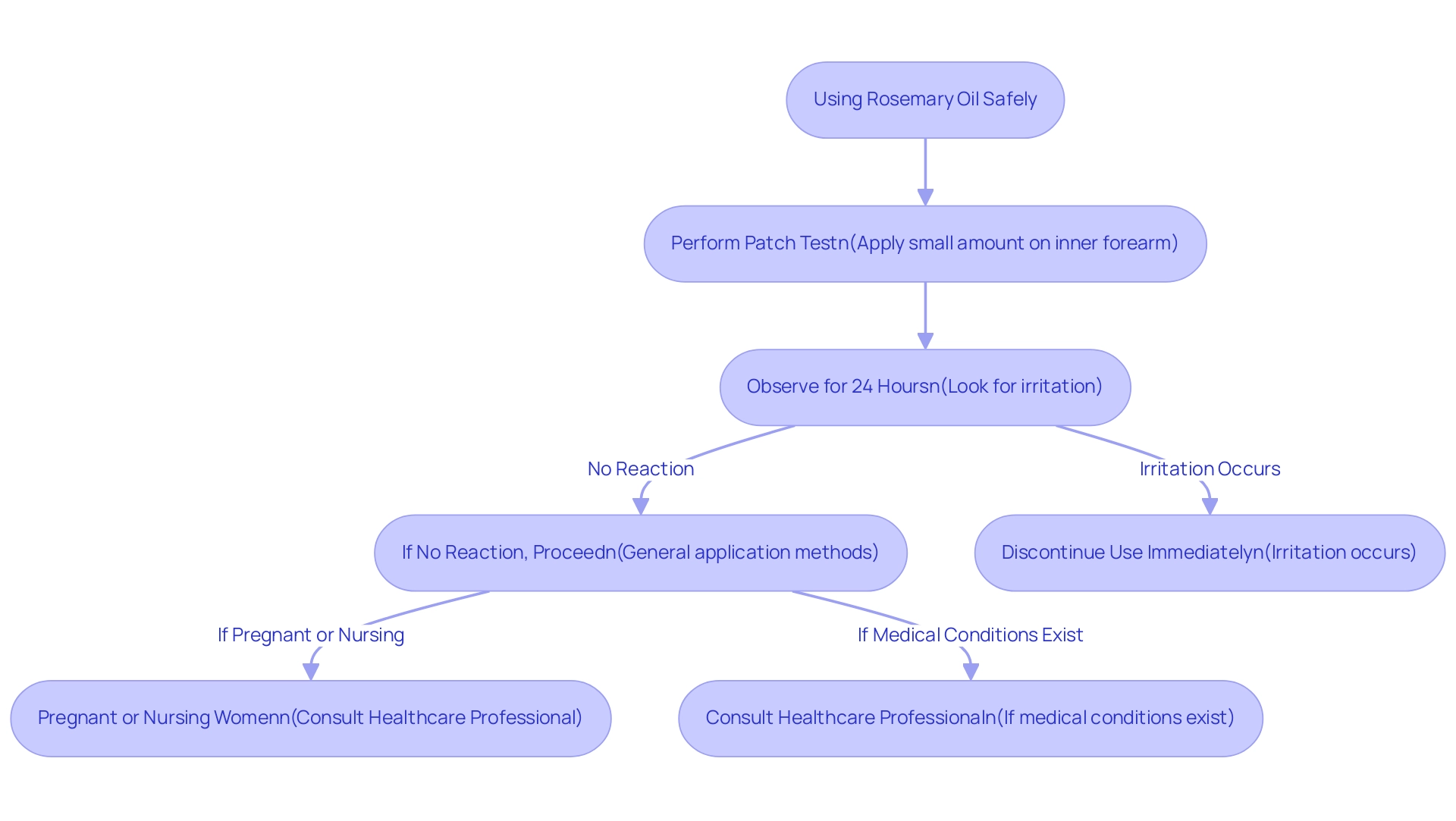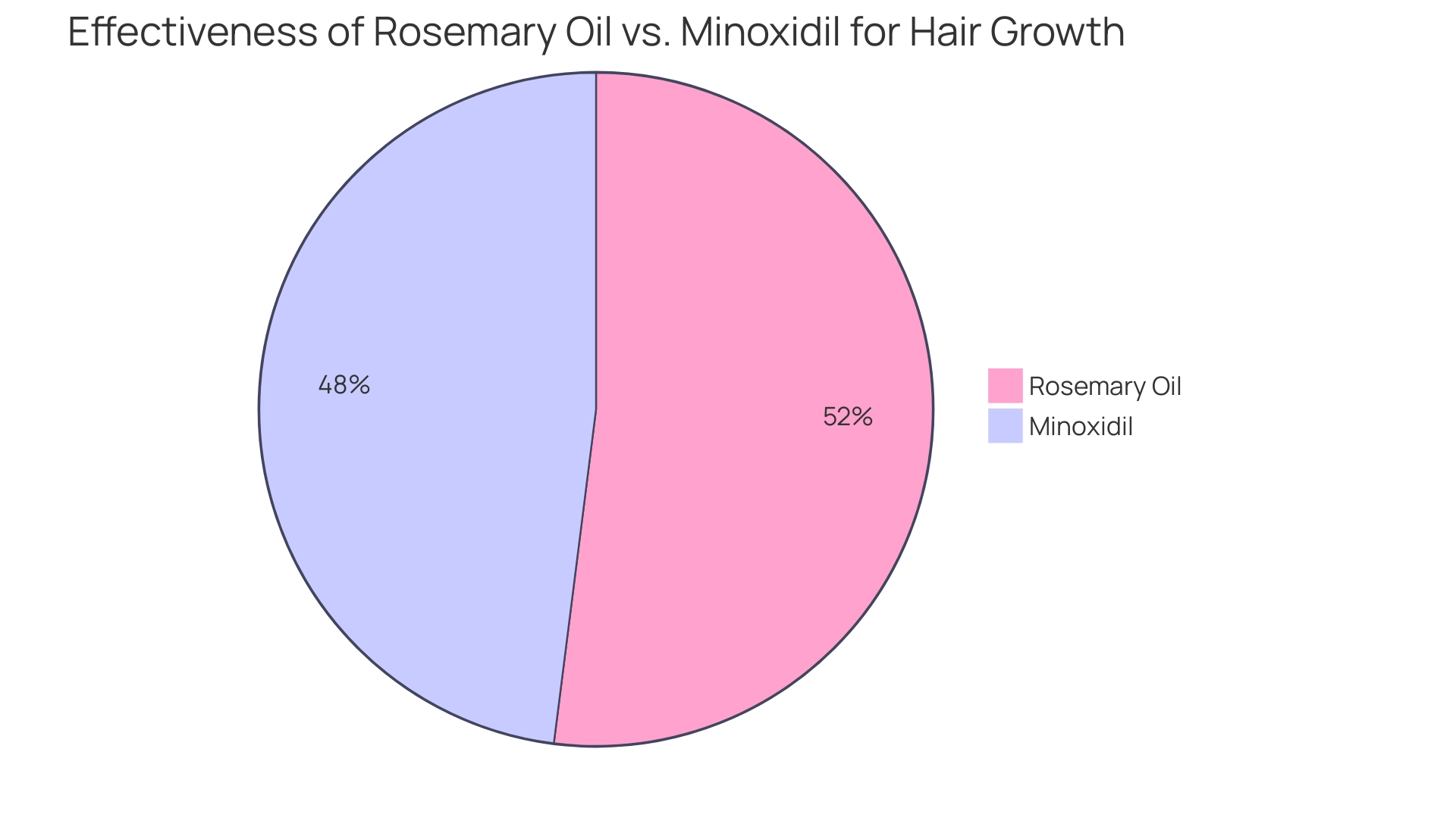Introduction
The pursuit of healthy hair has led many to explore natural remedies, with rosemary oil standing out as a notable contender. Extracted from the Rosmarinus officinalis plant, this oil is celebrated not only for its aromatic properties but also for its potential to promote hair growth. Rich in antioxidants and anti-inflammatory compounds, rosemary oil enhances blood circulation to the scalp, a crucial factor in stimulating hair follicles.
Recent studies have shown that its efficacy can rival that of conventional treatments like Minoxidil, offering a compelling alternative for those seeking to combat hair loss. However, the journey to healthier hair requires more than just application; understanding the proper usage, potential side effects, and complementary practices is essential for maximizing results.
This article delves into the properties of rosemary oil, effective application techniques, safety considerations, and additional strategies to support hair growth, providing a comprehensive guide for anyone looking to enhance their hair care regimen.
1. Understanding Rosemary Oil: Properties and Benefits for Hair Growth
Rosemary oil for hair growth, which is derived from the leaves of the Rosmarinus officinalis plant, is famous for its many health advantages, especially in relation to scalp care. Abundant in antioxidants and anti-inflammatory substances, the oil plays a crucial role in improving blood circulation, which is essential for activating follicles. Studies show that mixtures like oleogels with oil from the herb (at a concentration of 10%) can produce results similar to those of recognized treatments for enhancing tresses, such as Minoxidil (2%), after a six-week duration.
As noted by freelance medical writer Lana Barhum,
The herb oleogel was found to have similar effects as minoxidil.
This implies that rosemary oil for hair growth may effectively stimulate growth by not only preventing loss but also enhancing thickness. However, results can vary based on individual circumstances, as some users may experience different outcomes.
Additionally, its antimicrobial properties contribute to a healthy scalp environment, which supports overall follicle health. Recent
immunological and histological studies have further explored the properties of Rosmarinus officinalis, reinforcing its potential benefits. Consistent use of rosemary oil for hair growth can lead to healthier, glossier locks, making it a preferred choice in natural grooming routines.
It is essential for users to uphold realistic expectations; significant improvements may take at least six months to become apparent, as emphasized in the case study on realistic expectations for follicle enhancement. Thus, consistency and patience are crucial when integrating oil into grooming routines.
2. How to Apply Rosemary Oil for Maximum Hair Growth
To effectively utilize oil from the herb for promoting growth, adhere to the following detailed steps:
-
Dilution: Begin by mixing 5-10 drops of rosemary oil with a suitable carrier oil, such as coconut or jojoba oil. This dilution is crucial to minimize the risk of irritation on the scalp.
-
Scalp Massage: Employ your fingertips to gently massage the oil mixture into your scalp for a duration of 5-10 minutes. This technique not only fosters blood circulation in the scalp but also enhances the absorption of the
beneficial properties of rosemary oil for hair growth. Expert advice indicates that using rosemary oil for hair growth along with regular scalp massages can significantly enhance the health and growth of tresses.
-
Application Duration: After massaging, allow the oil to remain on your scalp for at least 30 minutes. For improved efficacy, consider leaving it on overnight. To avoid any mess, cover your head with a shower cap during this period.
-
Cleansing: Finally, wash your locks as you normally would to remove the oil. For optimal outcomes, incorporate rosemary oil for hair growth into this routine and repeat it 1-2 times a week. Consistency in application is key to achieving noticeable improvements in growth.
In addition to rosemary oil, consider that transplants may be an option if medications are insufficient for loss. Furthermore, incorporating products like rosehip oil can enhance your care routine, as it has proven softening and moisturizing properties, which can make your locks less frizzy and more manageable. These insights not only expand your viewpoint on hair growth therapies but also link practical guidance with recognized advantages of essential extracts.
3. Safety and Side Effects of Using Rosemary Oil
Although this essential oil is considered safe for widespread use, it is crucial to recognize that some individuals may experience allergic reactions or skin irritation. Statistics indicate that allergic reactions to essential oils, including certain varieties, occur in approximately 2-3% of users, underscoring the necessity of taking precautions. It is strongly recommended to perform a patch test prior to full application; apply a small amount on the inner forearm and observe for any adverse reactions over 24 hours.
Should irritation manifest, it is imperative to discontinue use immediately. Furthermore, pregnant or nursing women, along with individuals with certain medical conditions, should consult a healthcare professional before using essential oil. Caution is also advised to avoid contact with eyes and mucous membranes, as such exposure can lead to discomfort.
In cases of ingestion, prompt medical attention is essential. Expert opinions highlight that while rosemary oil for hair growth can benefit scalp and skin care—"This oil aids in accelerating cell turnover, promoting your follicles to produce thicker, stronger strands"—awareness of its possible side effects is vital for safe usage. Furthermore,
applying rosemary oil for hair growth directly to the scalp or combining it with styling products, as emphasized in the case study 'Application Methods for Rosemary Oil,' can lead to gradual improvements in scalp health and development.
4. Scientific Evidence Supporting Rosemary Oil for Hair Growth
Recent studies on the effects of the
oil from the herb on growth have produced encouraging findings. A significant study published in
Skinmed demonstrated that oil from the herb exhibited comparable effectiveness to minoxidil, a widely used treatment for loss of tresses, over a six-month period. Participants in this study experienced notable increases in follicle count and thickness, with measurements of newly grown strands reaching 52, 55, and 54 mg/cm area of dorsal skin.
This strengthens the potential of rosemary oil for hair growth as a natural solution for improving tresses. Furthermore, the weight of newly developed strands was greatest in the group treated with 1% herbal lotion, indicating that the oil from the herb may improve blood circulation to the scalp, thus activating follicles and encouraging development. As Dr. Khetarpal notes, 'there are no guarantees,' but these findings position rosemary oil as a viable alternative for those seeking non-pharmaceutical options for enhancing density and overall health.
5. Enhancing Hair Growth: Tips and Complementary Practices
To effectively stimulate hair growth, consider implementing the following practices:
- Maintain a Balanced Diet: Focus on incorporating foods that are abundant in vitamins and minerals essential for hair health, such as biotin, zinc, and omega-3 fatty acids. Research indicates that these nutrients play a critical role in promoting healthier follicles. Additionally, L-lysine supplementation, when combined with iron supplementation, has been shown to significantly increase mean serum ferritin concentration, which is important for the health of tresses.
- Stay Hydrated: Adequate hydration is vital for maintaining scalp and tresses moisture. Drinking sufficient water daily can support overall vitality and prevent dryness.
- Reduce Stress: Participating in stress-relief activities, such as yoga or meditation, is essential, as chronic stress has been shown to hinder the development of locks. Ashwagandha, a powerful adaptogen, can naturally reduce stress and anxiety levels, promoting a calm mind and body. As Dr. Rajani Katta emphasizes, "Patients must be approached on a case-by-case basis," highlighting the importance of personalized strategies to mitigate stress-related effects on growth. Moreover, ashwagandha's benefits extend beyond stress relief; it has been shown to enhance muscle strength and stamina in men, which may indirectly support scalp health by improving overall physical well-being.
- Regular Trims: Schedule regular trims to eliminate split ends, which can lead to healthier-looking locks and reduce breakage.
- Avoid Heat Styling: Limit the use of heat styling tools, as excessive heat can damage the integrity of tresses. This preventive measure is essential for maintaining the strength of locks.
Incorporating these complementary practices, such as the use of rosemary oil and ashwagandha, may significantly improve outcomes related to scalp rejuvenation. Furthermore, studies suggest that individuals adhering to the
Mediterranean Diet, as referenced in the case study titled "Role of the
Mediterranean Diet in Alopecia Prevention," show a reduced risk of alopecia due to the diet's rich polyphenol content. Ongoing studies are essential to pinpoint particular dietary elements that enhance follicle development.
Notably, ashwagandha has also been linked to improvements in sexual health for men, which could contribute to overall vitality and well-being, further supporting hair growth.
Conclusion
The exploration of rosemary oil as a natural remedy for hair growth reveals its impressive potential and multifaceted benefits. Rich in antioxidants and anti-inflammatory properties, rosemary oil not only enhances blood circulation to the scalp but also shows promise comparable to conventional treatments like Minoxidil. Its ability to prevent hair loss and improve thickness, alongside its antimicrobial properties, positions it as a valuable addition to hair care regimens.
Effective application techniques include:
- Proper dilution
- Regular scalp massages
These techniques are essential for maximizing the oil's benefits. Consistency is key, with noticeable results often requiring several months of dedicated use. However, it is crucial to be aware of safety considerations, including:
- Potential allergic reactions
- The need for a patch test prior to full application
Complementary practices, such as maintaining a balanced diet, staying hydrated, and managing stress, further support hair health and growth. Integrating rosemary oil with these habits enhances the likelihood of achieving desired outcomes. As research continues to support its efficacy, rosemary oil emerges as a viable option for those seeking natural solutions to hair loss, promoting not only stronger, healthier hair but also an overall enhanced hair care experience.



































